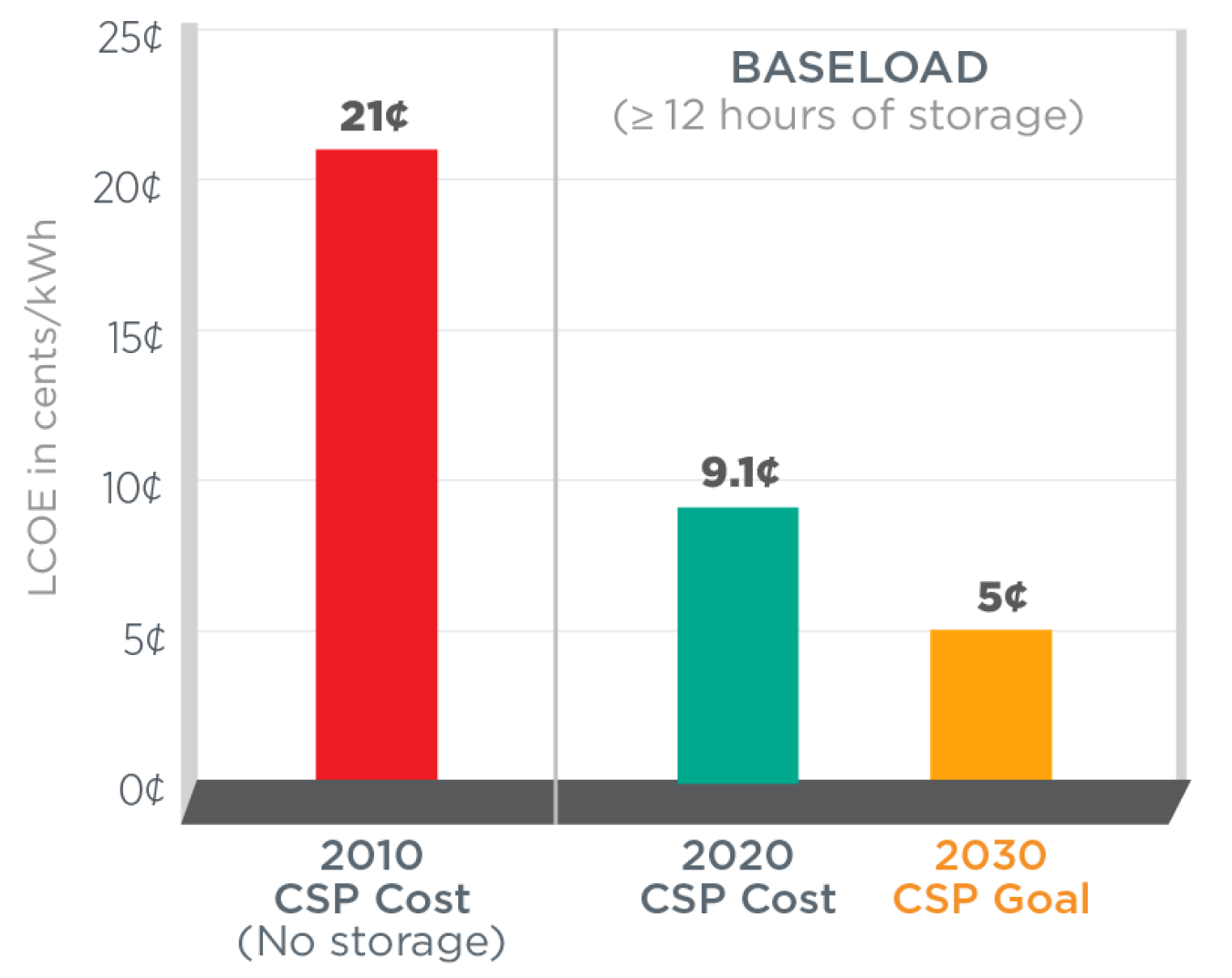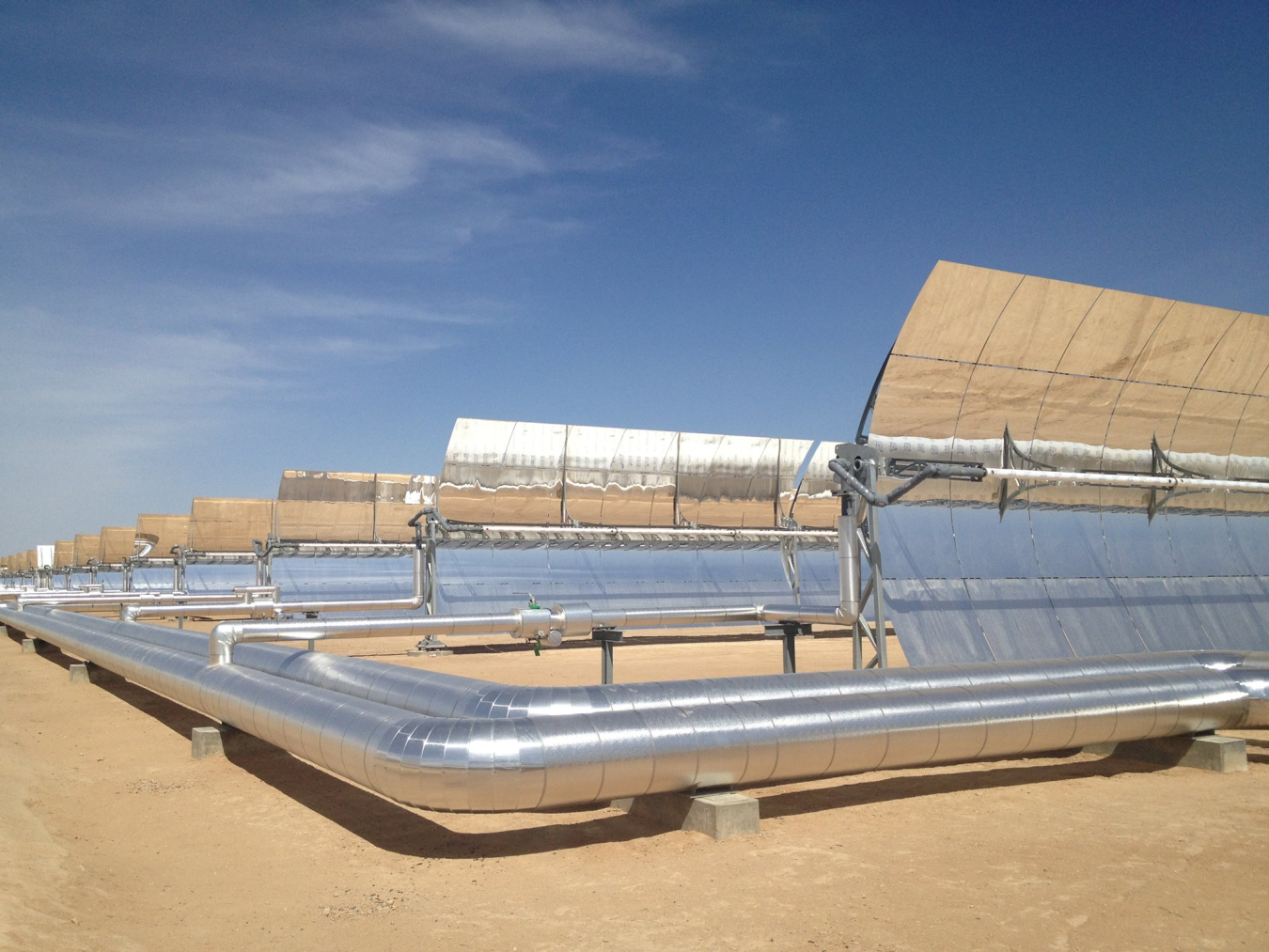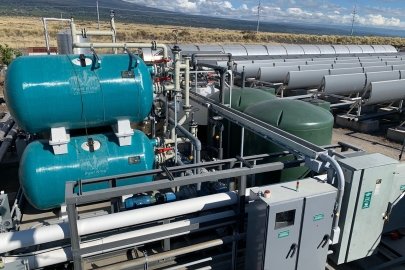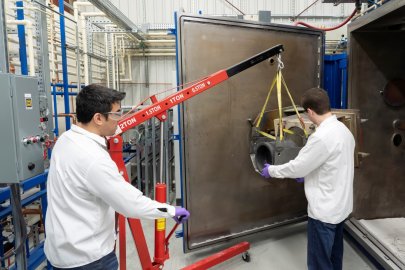Concentrating solar-thermal power (CSP) technologies can be used to generate electricity by converting energy from sunlight to power a turbine, but the same basic technologies can also be used to deliver heat to a variety of industrial applications, like water desalination, enhanced oil recovery, food processing, chemical production, and mineral processing. Learn more about how CSP works.
The U.S. Department of Energy Solar Energy Technologies Office (SETO) supports CSP research and development projects that work to improve the performance, reduce the cost, and improve the lifetime and reliability of materials, components, subsystems, and integrated solutions for CSP technologies.

In the past decade, the cost of electricity produced by CSP has dropped more than 50 percent thanks to more efficient systems and the wider use of thermal energy storage, which allows solar energy to be dispatchable around the clock and increase the time each day that a solar power plant can generate energy. SETO is working to make CSP even more affordable, with the goal of reaching $0.05 per kilowatt-hour for baseload plants with at least 12 hours of thermal energy storage.
In September 2021, DOE released the Solar Futures Study, a report that explores the role of solar energy in achieving these goals as part of a decarbonized U.S. electric grid. Learn more about SETO’s goals here.
In October 2021, Sandia National Laboratories (SNL) published a DOE-funded publicly accessible digital CSP archive. SNL solar researchers and librarians collected, digitized, and cataloged a host of historical CSP research documents, including reports, memos, blueprints, photos, and more. Sharing this information can help make the technology more accessible and the path to commercialization faster by preventing new researchers and companies from having to reinvent the wheel.
Within SETO’s CSP research area, efforts are focused on several topics. Learn more about them below.
Research Topics
-
 CSP subprogram funds research and development to achieve the technical and economic targets of the components for the different system configurations.September 29, 2022
CSP subprogram funds research and development to achieve the technical and economic targets of the components for the different system configurations.September 29, 2022 -
 Thermal energy storage (TES) refers to heat that is stored for later use—either to generate electricity on demand or for use in industrial processes.February 12, 2021
Thermal energy storage (TES) refers to heat that is stored for later use—either to generate electricity on demand or for use in industrial processes.February 12, 2021
-
 Power cycles are used in CSP thermal energy plants to convert heat into electricity using sunlight to generate the heat to power a turbine.
Power cycles are used in CSP thermal energy plants to convert heat into electricity using sunlight to generate the heat to power a turbine. -
 Collectors reflect and concentrate sunlight and redirect it to a receiver, where it is converted to heat and then used to generate electricity.
Collectors reflect and concentrate sunlight and redirect it to a receiver, where it is converted to heat and then used to generate electricity.
-
 Solar energy can be used to generate heat for a wide variety of industrial applications, including water desalination, and enhanced oil recovery.October 10, 2024
Solar energy can be used to generate heat for a wide variety of industrial applications, including water desalination, and enhanced oil recovery.October 10, 2024
SETO funding for CSP research is awarded to projects that substantially advance, develop, or engineer new concepts in the collector, receiver, thermal storage, heat transfer media, and power cycle subsystems, including technologies that will lower operations and management costs. This includes transformative concepts with the potential to break through existing cost and performance barriers. Projects are managed by the CSP team and executed with the goal of developing technologies that are commercially relevant for the U.S. energy sector. Reports resulting from research projects can be found on the Office of Science and Technical Information (OSTI) website. Learn more about SETO’s funding programs and current funding opportunities.
More CSP Information
CSP Success Stories
-
 With funds from DOE, Trevi and the Natural Energy Laboratory of Hawaii Authority created a solar desalination plant that produces fresh water
With funds from DOE, Trevi and the Natural Energy Laboratory of Hawaii Authority created a solar desalination plant that produces fresh water -
SETO awardee, Hyperlight Energy, to launch a new solar-thermal processing plant at a Saputo Cheese production facility in California.
-
 A new metal composite for heat exchangers could improve energy conversion and cut costs in CSP plants.
A new metal composite for heat exchangers could improve energy conversion and cut costs in CSP plants. -
 Sunvapor designed a solar collector to cut costs and optimize the supply chain by using less energy to manufacture the structural components.
Sunvapor designed a solar collector to cut costs and optimize the supply chain by using less energy to manufacture the structural components.

